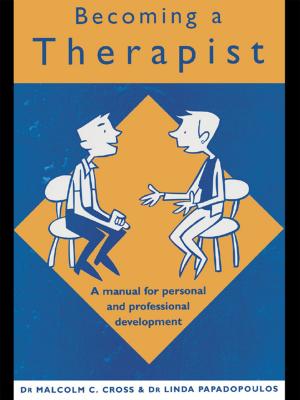Out of My Great Sorrows
The Armenian Genocide and Artist Mary Zakarian
Nonfiction, Art & Architecture, Art History, Social & Cultural Studies, Political Science, International, Social Science| Author: | Allan Arpajian, Susan Arpajian Jolley | ISBN: | 9781351500975 |
| Publisher: | Taylor and Francis | Publication: | July 12, 2017 |
| Imprint: | Routledge | Language: | English |
| Author: | Allan Arpajian, Susan Arpajian Jolley |
| ISBN: | 9781351500975 |
| Publisher: | Taylor and Francis |
| Publication: | July 12, 2017 |
| Imprint: | Routledge |
| Language: | English |
Out of My Great Sorrows is the story of Philadelphia artist Mary Zakarian, whose life and work were shaped by the experiences of her mother, a survivor of the 1915 Armenian Genocide. Written by Mary Zakarian's niece and nephew, the narrative examines the complexities of the artist's life as they relate to many issues, including ethnicity, gender, immigration, and assimilation. Above all this is a story of trauma - its effects on the survivor, its transmission through the generations, and its role in the artistic experience. Zakarian painted obsessively throughout her life. As she gained recognition for her artwork, she became increasingly haunted by her mother's untold story and was driven to express the tragedy of the Armenian Genocide in her art. Zakarian's attempt to deal openly with the issues of trauma and guilt caused conflicts in her relationship with her mother. These emotions became a driving force behind her art as well as the basis for her personal difficulties. By examining Mary Zakarian's life and art, the authors bring new insights to the study of the Armenian experience. This moving story will inspire all those who have struggled to express themselves in the face of injustice and oppression.
Out of My Great Sorrows is the story of Philadelphia artist Mary Zakarian, whose life and work were shaped by the experiences of her mother, a survivor of the 1915 Armenian Genocide. Written by Mary Zakarian's niece and nephew, the narrative examines the complexities of the artist's life as they relate to many issues, including ethnicity, gender, immigration, and assimilation. Above all this is a story of trauma - its effects on the survivor, its transmission through the generations, and its role in the artistic experience. Zakarian painted obsessively throughout her life. As she gained recognition for her artwork, she became increasingly haunted by her mother's untold story and was driven to express the tragedy of the Armenian Genocide in her art. Zakarian's attempt to deal openly with the issues of trauma and guilt caused conflicts in her relationship with her mother. These emotions became a driving force behind her art as well as the basis for her personal difficulties. By examining Mary Zakarian's life and art, the authors bring new insights to the study of the Armenian experience. This moving story will inspire all those who have struggled to express themselves in the face of injustice and oppression.















